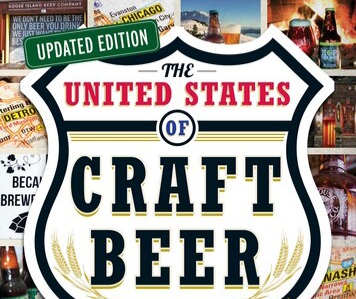Now Reading: Craft Beer Boom: Exploring the Craft Beer Renaissance in the US Retail Market
-
01
Craft Beer Boom: Exploring the Craft Beer Renaissance in the US Retail Market
Craft Beer Boom: Exploring the Craft Beer Renaissance in the US Retail Market

Craft Beer Fever: How the US Retail Market Embraces the Brewing Renaissance
Introduction:
The craft beer industry has seen tremendous growth in recent years, captivating beer drinkers and transforming the U.S. retail market. Known for their unique flavours, high-quality ingredients and innovative brewing techniques, craft beer has developed a loyal following and undermined the dominance of traditional beer brands. This article looks at the craft beer boom and explores the factors behind craft beer’s resurgence in the US retail market.
1. Quality and Artistry:
Craft beer is characterised by an emphasis on quality and artistry. Craft brewers often prefer to use locally sourced, high-quality ingredients and use traditional brewing methods that emphasise flavour and complexity. This dedication to craftsmanship has resonated with consumers seeking more authentic and flavorful beers, leading to increased demand for craft beer in the retail market.
2. Exploring Flavors and Variety:
Craft beer offers a wide range of flavours and styles, giving consumers the opportunity to explore and experiment. From hoppy IPAs to rich stouts and fruity acids, craft breweries are constantly pushing the boundaries of taste to cater to different tastes. This wide range of flavours appeals to beer lovers who appreciate the opportunity to discover interesting new beers, making craft beer an attractive option for retail consumers.
3. Local and independent calls:
The craft beer movement emphasises local independent breweries. Consumers are increasingly drawn to the idea of supporting local businesses and their communities. Craft breweries are often gathering places, fostering a sense of community and pride. A connection to local roots and the independent spirit of craft beer resonates with consumers and fuels the growth of craft beer in the retail market.
4. Brewing innovation and experimentation:
Craft brewers are known for their innovation and willingness to experiment with new ingredients and brewing methods. This constant desire to innovate leads to the creation of unique beers that push the boundaries of what is possible. Craft breweries often partner with other local businesses such as coffee roasters and confectionery companies, resulting in innovative and interesting flavour combinations. This experimental spirit attracts consumers who want to try new and innovative beers.
5. Craft beer culture and education:
Craft beer forms a vibrant and passionate community of beer lovers. Craft beer festivals, tastings and brewery tours are growing in popularity, offering consumers the opportunity to immerse themselves in craft beer culture. Additionally, breweries and retailers often offer educational resources such as beer lessons and tasting notes to help consumers develop their knowledge and appreciation of craft beer. This focus on education will further contribute to craft beer’s resurgence in the retail market.
6. Impact of social media and online communities:
Social media platforms and online communities have played an important role in the development of the craft beer industry. Beer enthusiasts use platforms such as Instagram, Facebook, and beer review sites to share their experiences, recommendations, and discoveries. This digital word of mouth helped spread the word about craft beer, spark interest, influence consumer choice, and drive demand in the retail market.
Conclusion:
The craft beer boom has transformed the U.S. retail market, challenging the dominance of traditional beer brands and captivating consumers with their quality, flavour diversity and innovative spirit. Craft beer’s focus on craftsmanship, local connections, and brewing innovation resonates with beer lovers, leading to increased demand for craft beer in the retail sector. As the craft beer renaissance continues, it’s clear that this vibrant industry will continue to shape the future of the U.S. retail market, providing consumers with an ever-expanding range of flavours and experiences that they enjoy.








